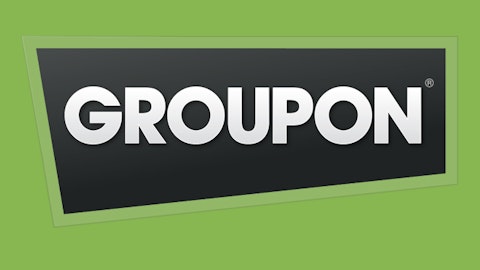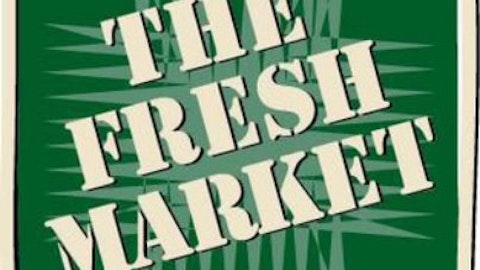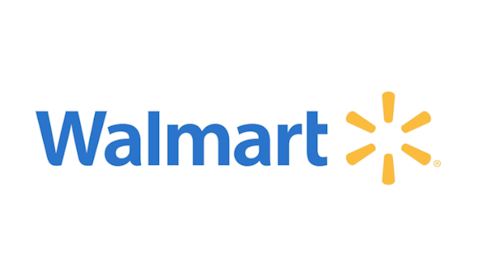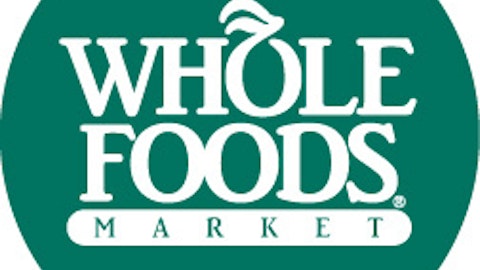One of the largest grocery store chains in the U.S., The Kroger Co. (NYSE:KR) has ridden the recent market rally particularly well, and is sitting just under its 52-week high as I write this. In fact, over the past year, shares of The Kroger Co. (NYSE:KR) have gained about 60%, making the overall market rally look like small potatoes.
With increased competition from discount giants with extremely low overheads like Wal-Mart Stores, Inc. (NYSE:WMT), and also from organic and natural food specialty stores like Whole Foods Market, Inc.(NASDAQ:WFM), how should investors play the grocery sector? Is now a good time to take some profits in The Kroger Co. (NYSE:KR), or is there still upside potential here?
A little about Kroger
The Kroger Co. (NYSE:KR) makes the majority (94%) of its money from its supermarkets, of which the company operates over 2,400 of in the United States. The company also operates almost 800 convenience stores under brand names such as Kwik Stop, Tom Thumb, and others, as well as over 300 jewelry stores under such brand names as Littman Jewelers and Barclay Jewelers.
Lately, The Kroger Co. (NYSE:KR)’s growth strategy has been focused on improving its training methods and to provide customers with the best possible shopping experience. The company seems to realize that it cannot be completely price-competitive with companies like Wal-Mart Stores, Inc. (NYSE:WMT), but the goal is to make the experience in its stores so much better that customers don’t mind having to spend a bit more. Having said that, there is some degree of pricing pressure as a result of Wal-Mart Stores, Inc. (NYSE:WMT)’s low-price strategies, but as long as The Kroger Co. (NYSE:KR) remains competitive, its customer base should remain intact.
Cheap or expensive?
Even after the recent gains, Kroger trades for just 12.4 times last years earnings, and the consensus calls for about 10% annual earnings growth for the next few years. This sounds very good, but first bear in mind that Kroger carries a relatively high debt load of about $5.5 billion (about 30% of its market cap), which does warrant a lower P/E. Historically, Kroger’s average P/E is right around 11 times earnings, so as cheap as it sounds, shares actually trade for a premium right now.
Other ways to play
As mentioned, Kroger faces competition from giant discounters such as Wal-Mart Stores, Inc. (NYSE:WMT), as well as the growing popularity of organic and natural food, the largest seller of which is Whole Foods Market, Inc.(NASDAQ:WFM).
Let’s take a quick look at them for comparative purposes. Most people are aware that Wal-Mart Stores, Inc. (NYSE:WMT) is the largest retailer in the world with annual sales of over half a trillion (yes, trillion) dollars. In addition to a 2.5% dividend yield, Wal-Mart Stores, Inc. (NYSE:WMT) trades for 15.2 times last year’s earnings, which are projected to grow at a consensus of 8.6% annually for the next few years. What a lot of investors don’t realize is that Wal-Mart has become the number one grocer in the U.S. with about $180 billion in annual grocery sales, or about 35% of the entire market. Whole Foods Market, Inc.(NASDAQ:WFM) is the largest chain of natural and organic foods in the U.S. with about 340 stores in 37 states. What Whole Food lacks in safety and yield it makes up for with growth. The company has grown its revenue drastically over the past decade and is projected to do the same going forward. Although Whole Foods Market, Inc.(NASDAQ:WFM) trades at a lofty valuation of about 37 times TTM earnings, the consensus calls for 18% earnings growth going forward. Also worth mentioning is that Whole Foods Market, Inc.(NASDAQ:WFM) has arguably the most attractive balance sheet out of the three with over $1.2 billion in cash and no long-term debt.
Buy, sell, or hold?
If you want stability and dependable income, buy Wal-Mart. For those with a bit more risk tolerance, Kroger or Whole Foods Market, Inc.(NASDAQ:WFM) may be the better and more exciting way to go. Having said that, right now I think Kroger may be a bit expensive after the recent gains, and shares would need to pull back a bit before I would become a buyer again. If you are a current Kroger shareholder, after the kind of gain you’ve gotten in the past year, it may be wise to take at least some of your profits. After all, a 60% gain in one year is not too shabby…
Matthew Frankel has no position in any stocks mentioned. The Motley Fool recommends Whole Foods Market. The Motley Fool owns shares of Whole Foods Market. Matthew is a member of The Motley Fool Blog Network — entries represent the personal opinion of the blogger and are not formally edited.
The article How to Play the Grocery Business After Recent Gains originally appeared on Fool.com is written by Matthew Frankel.
Copyright © 1995 – 2013 The Motley Fool, LLC. All rights reserved. The Motley Fool has a disclosure policy.




